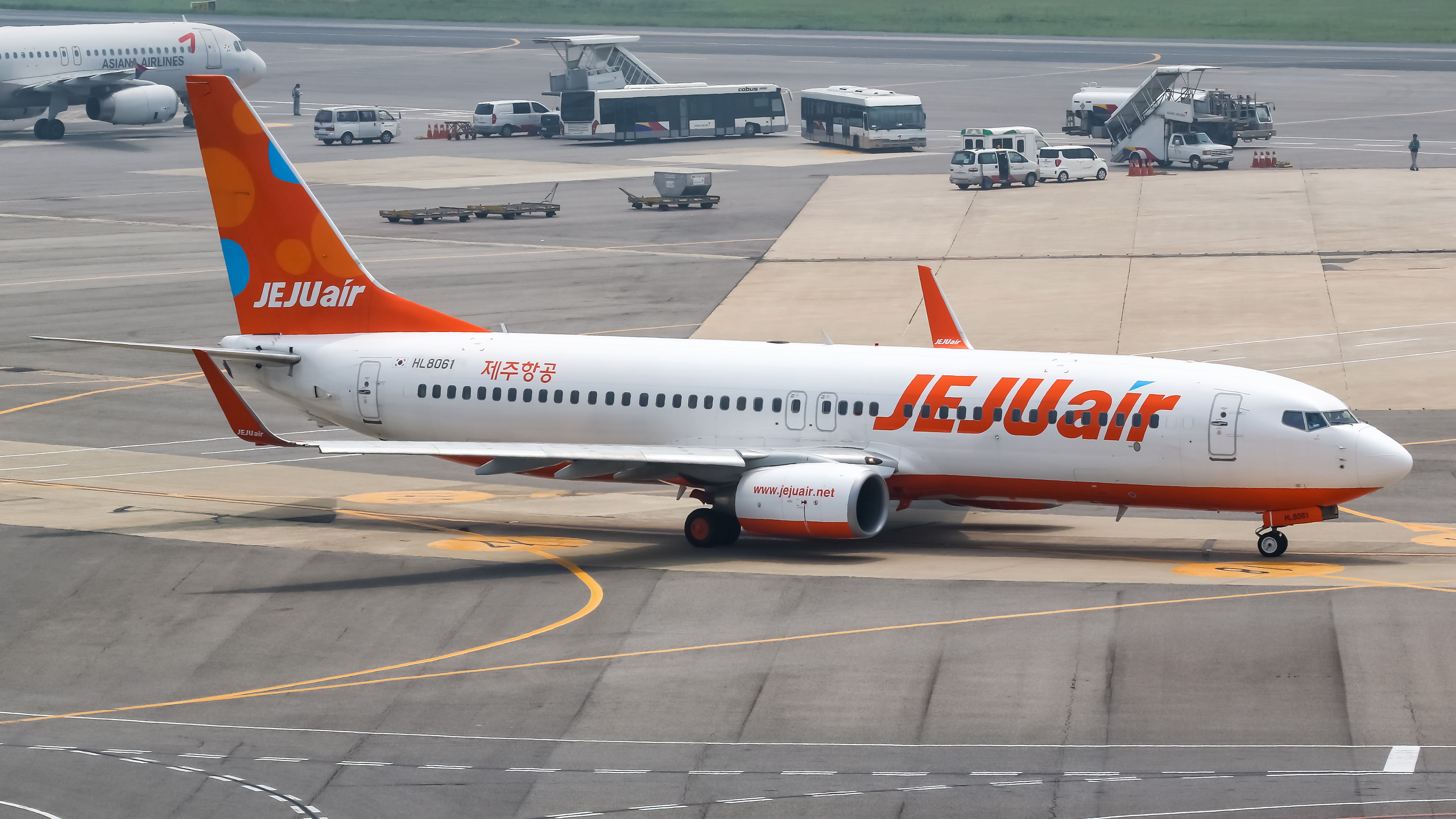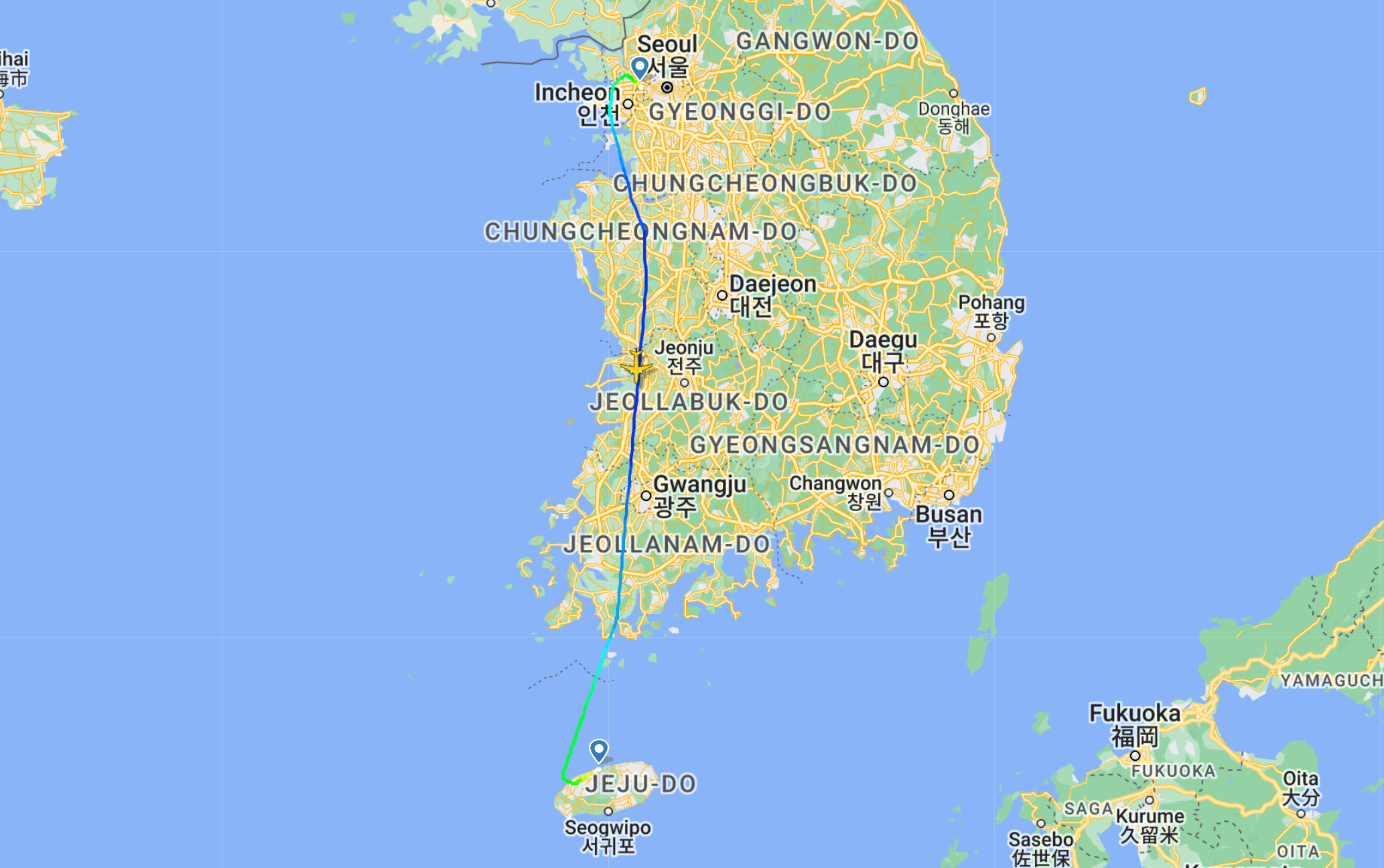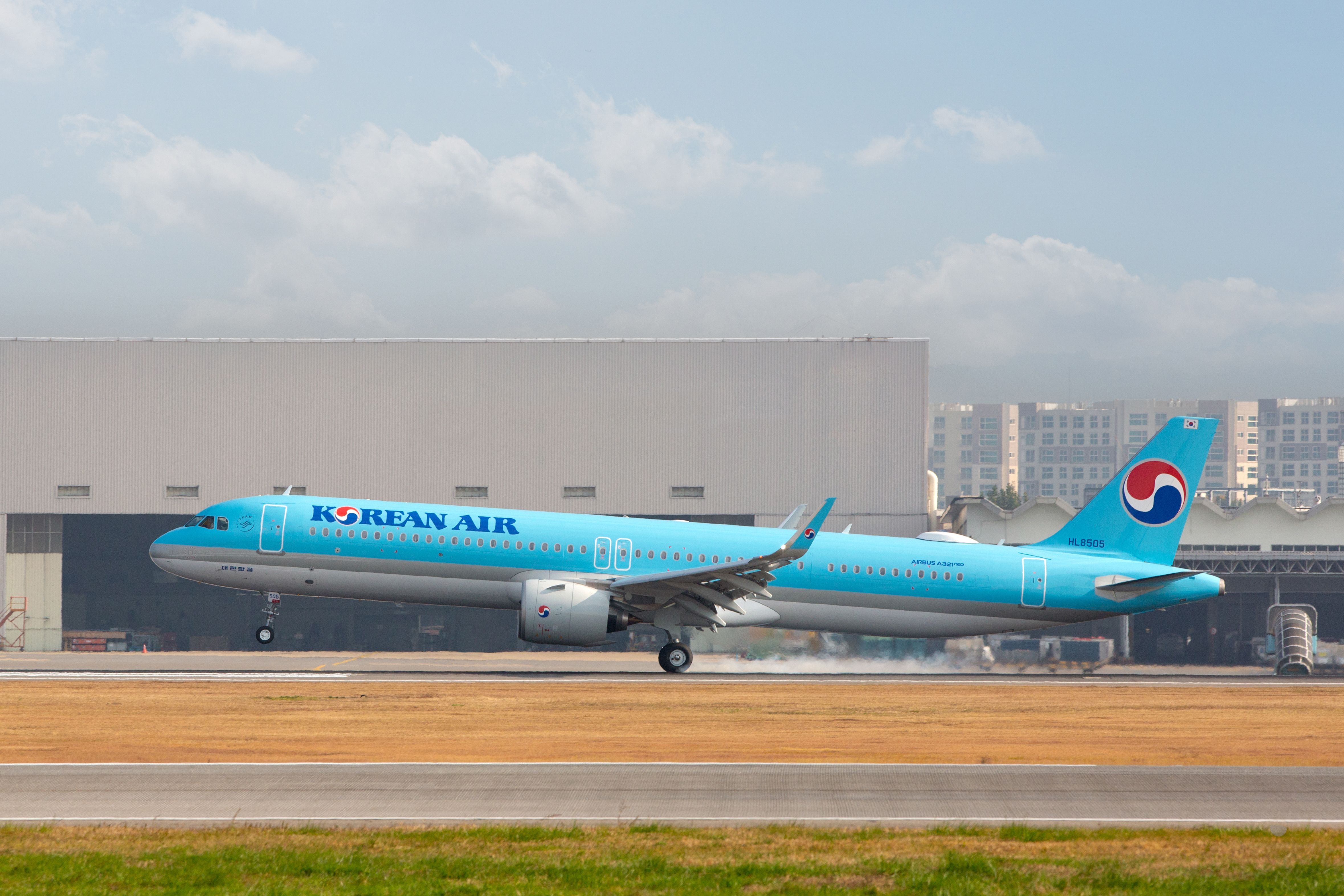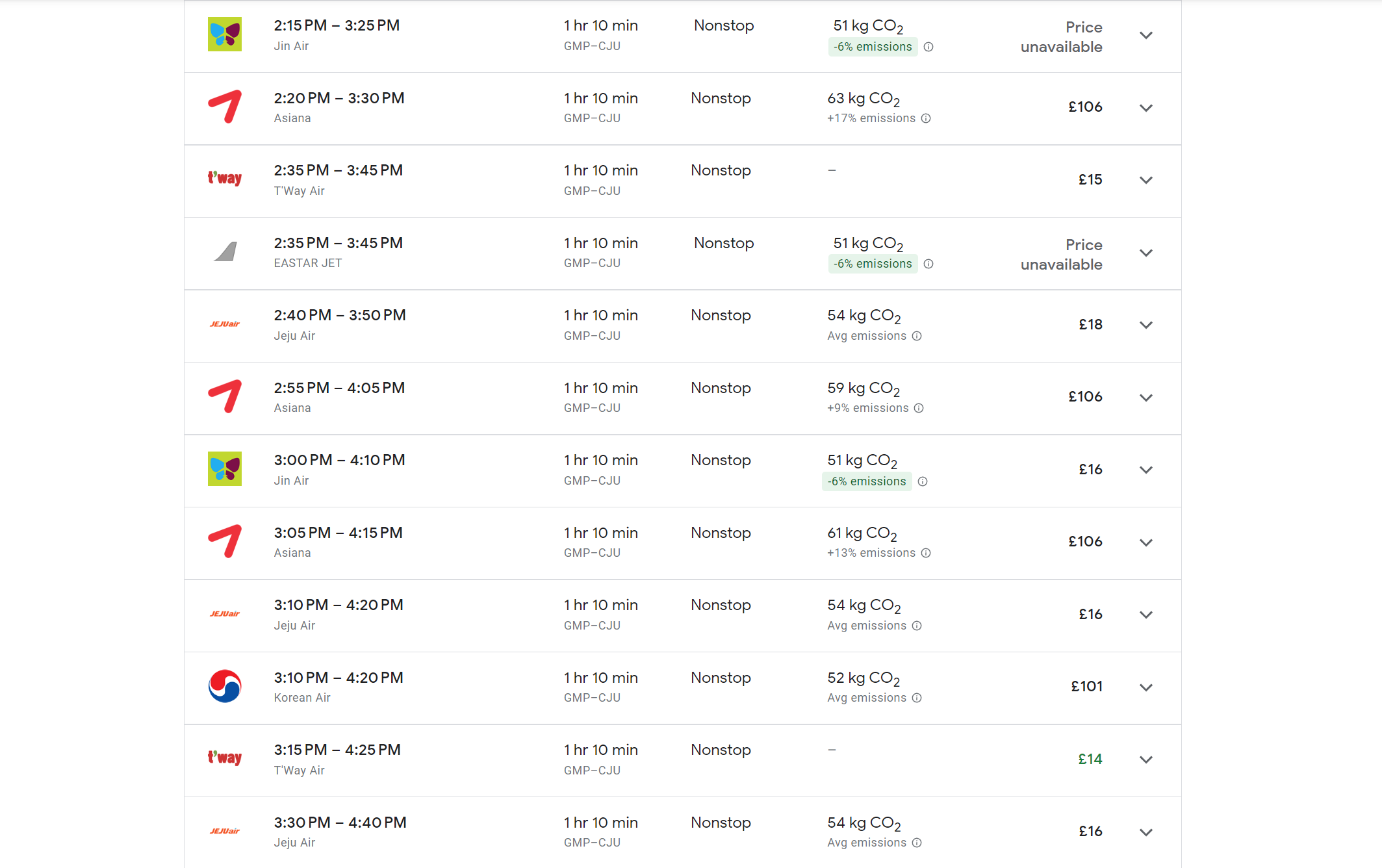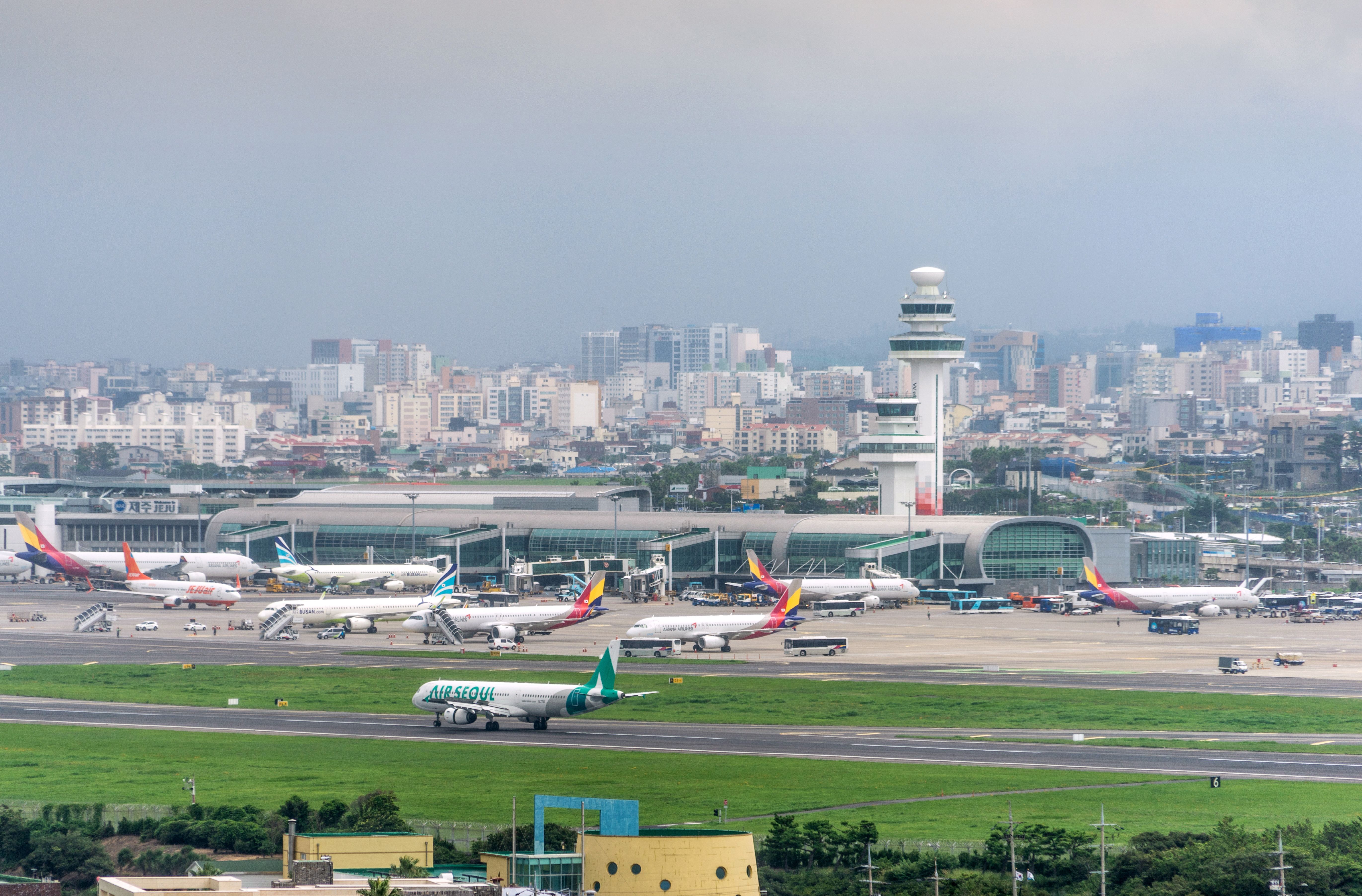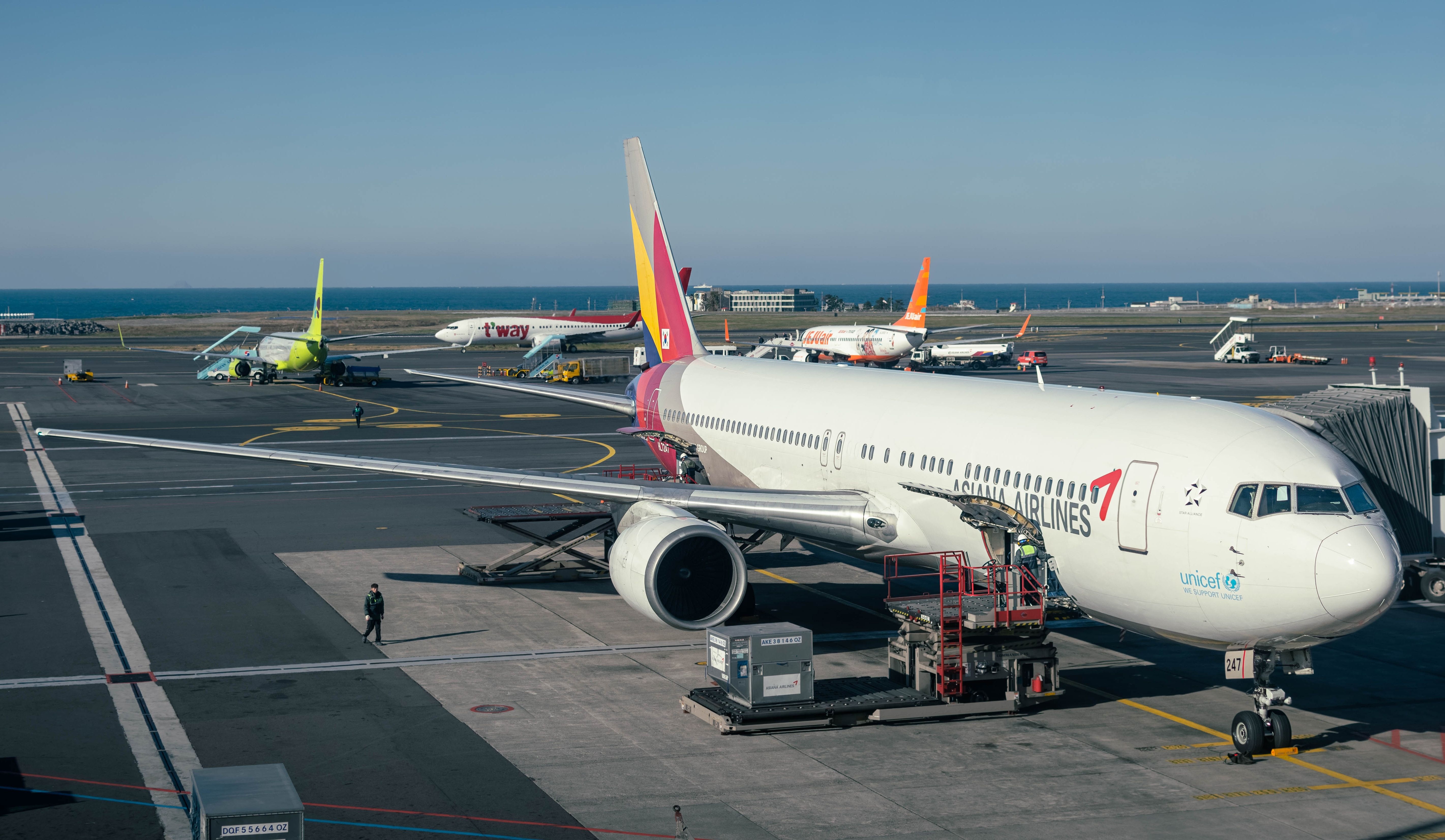The world’s busiest route in 2022 was a short, one hour and ten-minute hop between the capital of South Korea and the nearby island of Jeju. With more than 88,000 flights over the year, Seoul Gimpo-Jeju retained its position as the world's busiest air route (as measured by passenger numbers), a title it has held for multiple consecutive years. Here’s a look at why the route between Jeju and Seoul is the world’s busiest, and the challenges it presents for the future.
The Hawaii of South Korea
Over the past several years, there has been one airline route that stands out above all others for being the busiest passenger route in the world. Surprisingly, it isn't London to New York, or even the popular Hong Kong to Taipei route. It isn't even an international route, but rather a domestic one, flying between Seoul in South Korea and the island of Jeju.
In 2022, Seoul Gimpo-Jeju continued its streak as the busiest route, with over 15.6 million passengers making the trip at an average of 226 daily flight movements. This is a position it has held for almost a decade, dethroning Tokyo-Sapporo, which held the title in 2013. For the record, Tokyo-Sapporo came in second with over 10.6 million passengers, closely followed by Hanoi-Ho Chi Minh (10.6 million) and Tokyo-Fukuoka (10.4 million).
In the pre-pandemic area, flights between Seoul (GMP) and Jeju (CJU) in 2019 deployed some 17 million seats over the year, so capacity had almost caught up in 2022. That’s around 48,000 seats a day, and some 40% more capacity than the next busiest route (which was Sapporo to Tokyo, if you’re interested). While some of these are business trips or visiting family and friends traffic, the vast majority is tourism, with more than 15 million visitors arriving on the island each year.
Over the past ten years, Jeju has become a booming tourist hotspot for Koreans, and is sometimes dubbed the ‘Hawaii of South Korea’. However, the influx of visitors has come at a cost to the island, with reports of massive pollution problems, littering, and exhaustion of natural resources.
The air route's popularity is aided by the fact that Jeju is an island, making road accessibility (other than via ferry) off the cards. As a domestic route, it also benefits from visa-free travel, helping to drive up numbers. Finally, the island of Jeju itself is diverse in what it offers - entertainment, natural wonders, high-end resorts and much more - appealing to tourists of all tastes.
Who flies the route?
The trip between Jeju and Seoul is not particularly long. Clocking in at around 450 km, the flight usually takes around an hour to complete, and yet it’s still incredibly competitive. There are currently nine airlines serving this route, with departures throughout the day at roughly 10-minute intervals.
Korean Air and Asiana Airlines are the two most dominant carriers on this route, with over 200 weekly departures each, while Jeju Air operates around 150 weekly flights. Making up capacity on the route are several smaller carriers - T’Way Air, Air Seoul, Jin Air, Hi Air, Air Busan and Eastar Jet. Aircraft types range from the Airbus and Boeing narrowbody lines - including the A320 and 737 - to widebodies like the A330 and 767.
An OAG analysis showed that this route only made the top ten most competitive domestic routes in terms of the number of carriers. However, it soars above the competition in frequency, with more than 88,000 flights taking to the skies in 2022. A quick search on Google Flights reveals one-way fares as cheap as $15 for September 2023, which is just after the island's high season.
The future of the world’s busiest route
While the aviation industry was thrown into turmoil over the pandemic, the world’s busiest route performed surprisingly well. Given that this is a domestic route, Koreans were still willing to take a trip to their homegrown paradise, even during a pandemic.
However, the destination is facing issues now that the world has opened up again. It’s not only South Korea that loves to visit Jeju. Visitors from China, Malaysia, Thailand and Japan further bloat the tourist arrivals, causing problems with traffic jams, rubbish-strewn beaches and depleted water supplies.
The island's overcrowding has made it a less attractive place for domestic passengers - who are now choosing to travel further afield to the likes Japan, Thailand and Vietnam - and it has also developed a reputation for overcharging. Korean JoongAng Daily reports that the number of Korean visitors to Jeju over June 2023 was almost 15% lower year-on-year.
Discover more aviation news with Simple Flying.
The surge in popularity has caused issues for the airport too. In 1997, it handled just nine million passengers. However, in 2019, it passed the 30 million milestone for the first time - the airport was only designed to handle a maximum of 26 million passengers, so it is regularly overcrowded and struggling to manage. It continued to exceed its capacity in 2022 - hitting over 29 million passengers - and is likely to exceed this again over 2023.
A second airport is planned for the island at the southern city of Seogwipo, with an investment of over $5 billion earmarked for the development. Initially expected to open in 2025, it has been a contentious project, with island residents arguing there are too many visitors already. The project overcame an important regulatory hurdle in May 2023 - having previously been rejected on environmental grounds in 2021 - so it looks like it will go ahead after all.
While COVID may have granted a reprieve to Jeju, with international visitor numbers dropping off a cliff, Seoul's domestic route looks set to remain one of the world’s busiest routes in 2023. It continued to be the world's busiest route as of August 2023 - with over 1.1 million seats for the month - and will likely retain its crown as the busiest worldwide over the course of the year.
Have you ever flown between Seoul and Jeju? Which airline did you fly with? Let us know your stories in the comments.
Source: OAG, Korean JoongAng Daily

